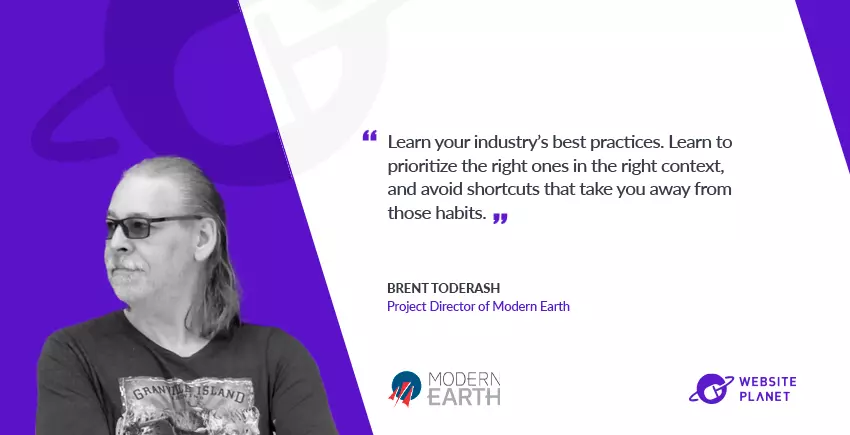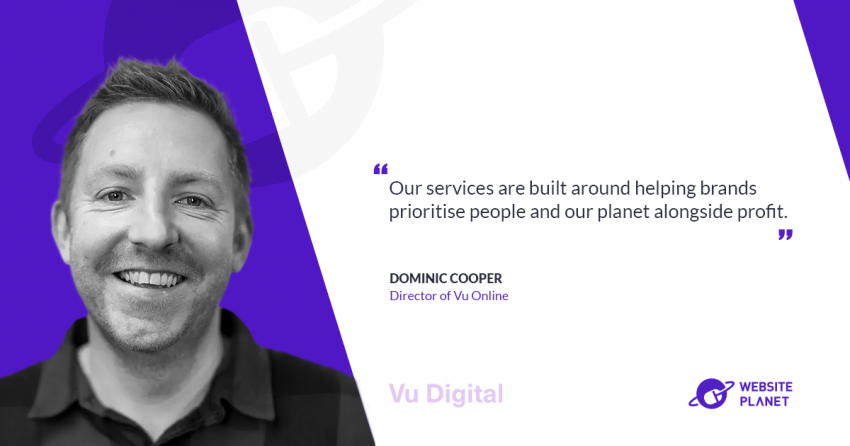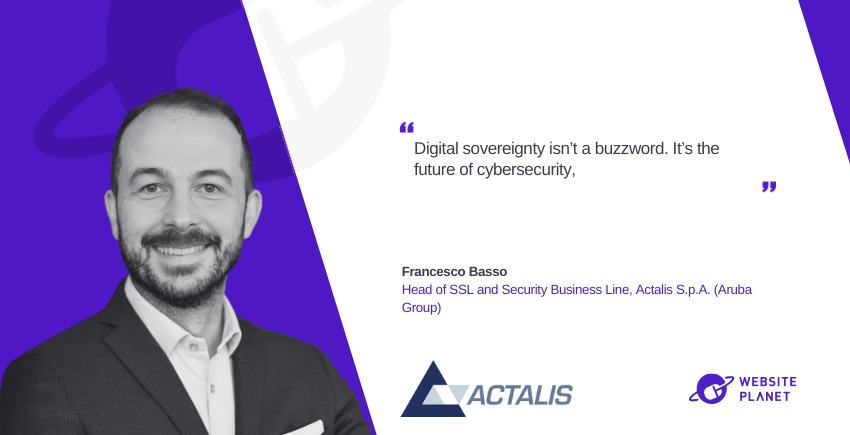What gaps or trends in your industry led to the founding of your company, and what are your biggest milestones so far in terms of customers, revenue team, etc.?
I’ve actually got more than one answer here. Going back into the late 1990s, my brother and business partner was working as a software developer on some very large projects. With the conviction that one day software would all be delivered online, he forged into the ISP business. While continuing software and web development, we built a large-scale wireless broadband network with a small datacenter hosting numerous websites, including VoIP and other applications as well as streaming services for some local radio stations. The industry matured through its acquisition phase, we exited the business and did some freelance for a couple of years. Our experience working with SMEs in providing those services left us feeling we had more to do in the industry. I had been using WordPress since it was called b2, and while WordPress has done a lot to “democratize publishing”, providing technical know-how was never really part of its mandate, and that brings us to the industry gap where we launched the business. “Managed WordPress Hosting” wasn’t really a thing back in 2012, and even today the word “managed” has something of a fluid definition. We launched a “Site Care” approach to hosting with a WordPress specialty where we simply look after what clients need. They don’t have to know how DNS works, why it’s important to their email deliverability, what an SSL/TLS certificate is, or how to update software or schedule backups on their website. We just bundle all of that and take care of the site, including scanning for and removing malware. With other managed services, gaps remain for many of those things, but our approach is not to offer very many “partially-managed” options to clients who really want things to “just work”. For that reason, when we sell a VPS, we also manage the server. Most of our growth has been through acquisitions as we’ve brought on hosting clients in bulk, removing malware as we onboard them and bringing whatever we can up to date. In 2021 we did a major acquisition of Modern Earth, a web development and online marketing company that, like us, had more than a two-decade history in our local market. With that acquisition, we significantly expanded our web development and online marketing offerings.What are currently the most pressing pain points that you solve, and what makes them more urgent now than in the past?
In a typical website rebuild, we’re often looking to meet two objectives: (1) increase your sales; and (2) make your life easier. Obviously there’s no guarantee of increased sales, but if we’re taking a client’s brochure-style site and upgrading it to do ecommerce, we’re hoping that will increase sales to a broader market. If we’re also managing inventory and posting sales transactions back to their accounting software, that’s making their life easier. This is where we see growth opportunities in our industry. Anyone can put up a 5- or 10-page site with basic information and call it a day – and for some businesses, perhaps that’s all they need to meet their current objectives. But for others, they’re looking to do more online and to leverage automation to help their business grow and/or to reduce administrative costs. Those dealing extensively or solely with wholesale clients may not need a payment gateway, but the ability for their customers to review their order history, reorder online, or browse a product catalogue and order can streamline a lot of processes and free up staff from telephone order-taking where the customer has to ask a lot of standard questions that can simply be presented online. Think of this next phase of web growth involving the building of not just websites, not just online shops, but web portals:- People expect to be able to do everything online now, whether that’s reading a menu and ordering lunch delivery or paying a parking ticket or buying a concert ticket.
- Once that’s done, they’ll check the transaction via online banking and make a comment about it on social media.
- Perhaps after that they’ll book a doctor’s appointment online or spend some time “building” the new car they’re planning to buy to see how much all the options will cost.
How are people usually trying to fix these problems, and what’s wrong with these solutions?
A lot of it is simply upgrading from the old-school ways. You can retire that spreadsheet, stop copy/pasting, and end duplicate data entry. It may not be difficult work, but the observation that “somebody’s gotta do it” isn’t always true anymore. Sometimes we see clients doing things and just say, “Yeah… we don’t do that anymore.” It’s not just the shared Excel file – we still talk to clients who still use a lot of paper. Another aspect is adjusting to the right approach and expectations, which builds on the previous question about pain points. A few years ago we ran an info seminar on doing Google Ads, and got talking to someone who became a good client. They wanted to increase their web traffic, obviously a good goal – but after digging into their website, I told him that although we could buy him a ton more traffic, it wasn’t going to improve his sales because customers couldn’t actually do anything when they landed on the website. Fast-forward to today, and he’s taking an impressive number of online orders, and it’s well worth driving traffic to the site. The curveball is that the business is a bakery and doesn’t ship your cake or cookie order – but you can fully customize the order, pick the size, flavour, frosting colour, filling, and if you want, upload a photo to appear on it. Prepaid and ready for pickup, at the appointed time you’re in and out, quick and efficient (unless the fresh bagels have you making an impulse purchase). So yes, a bakery can do ecommerce. As a bonus, instead of walking through a lot of options and variations with each customer on the phone to fill out a form by hand, now a pdf just shows up like a work order, sliding right into their established workflow.When we align the goals and expectations, we can often streamline workflows, remove manual processes, and improve the bottom line in ways that you might not typically think a website would do.
What features or unique approaches make your way to solve them better, and how has that helped you make an impact? Can you share metrics or stories that show the difference you’re making?
We’re doing a lot of web app development using WordPress as a framework, giving clients another option for what they want the web to do for them. We’re not just asking how they can promote themselves or sell online, we’re also asking how we can help improve their workflow, reduce duplication, and save staff admin effort that could be directed elsewhere. The bakery I mentioned is a good example here. Staff used to spend time on the phone answering questions about cake or cookie options and prices, which is now all online. Rather than a handwritten work order, the website produces a pdf with the same layout as the handwritten work order, and it just slides into their workflow the same way it always did. I guess bakery owners talk, because when this one told another what he had going and how much business it was doing this way, the other baker was quite impressed. We just signed a new project for a long-time client to build a portal for their sales agents. Previously this was all handwritten forms summarized in a shared Excel sheet to track what was ordered, paid, scheduled, and shipped. The plan is to move all of that online so agents can fill out the forms online and have it all tracked in one spot without exchanging paper or emails about what just happened or what an order status might be.What exciting new projects or updates are you working on right now? What made you decide to focus on them, and how are they going to benefit your customers?
Since our approach to web hosting is a “site care” model (and the name of our hosting product), we’re working through some php upgrades to get rid of 7.x and move everyone to the latest version 8.x. This isn’t something a web host normally does, but for us it’s included as part of the service. If the site cannot be updated for some reason, we’ll reach out to the client to let them know what steps will need to be taken and what the cost may be. Another thing we’re planning right now is an SEO and analytics monitoring and reporting platform. We’ve been subscribed to one that’s getting costly for what it does, and after surveying the market we feel it’s better to just build our own using available APIs to get exactly what we need for the SEO & SEM services we offer.Keeping our costs down saves our clients money, but it also helps us fine-tune what we’re looking for and make us more efficient in delivering a truly beneficial service where an hour’s effort is worth 50% more – or whatever the metric turns out to be.
What trends and technologies are you keeping an eye on? What opportunities and challenges will they bring to your industry?
AI, obviously – we’re all watching that one. Like you I’m sure, I’m being inundated by every service I know wanting another $5/month or whatever to add AI to my subscription. There’s got to be some value in some of those offers somewhere, but I often can’t find it. We’re experimenting with AI in a few areas, but it’s got to have some ROI in each area. In some of those, it still takes too much training to get the right output. I recently spent a half-hour trying and failing to get a correct AI-generated answer to a question that a basic search engine came back with on the first try. Don’t get me wrong, I’m optimistic about the future of AI, but we’re looking for ways that AI can genuinely make our work more efficient without increasing the validation effort required to the point it’s not helping. For example, if your copy really matters to you, I don’t think AI is there yet. A random throw-away blog post, sure. It does better than some writers, but can’t match the good ones. Another thing we’re watching is accessibility and privacy legislation, which is changing the industry mostly for the better. I recently wrote a piece on web accessibility and realized we’ve been talking about it since the 1990s. Today, it’s much easier to achieve, and anyone lacking adequate incentive to do it is being mandated to raise their game. We’re located in Canada, so for privacy, we’re looking not just at various cookie laws, but also looking at federal legislation we’ve had since April 2000 (PIPEDA) with ongoing reviews and amendments, including Bill C-27 currently under review. For us, all our web servers offer data residence in Canada, and we’re paying attention to how the applications we develop will store and use personal information – or whether it needs to. There’s an emerging intersection here between privacy and AI, so that’s one to watch as privacy laws are updated. Currently most AI is on an opt-out model with using your data for training, but I wouldn’t expect that to remain the case.If there was one piece of advice you wish to leave for those starting now, what would it be?
Learn your industry’s best practices. For web developers, this is a multi-disciplinary effort and sometimes those best practices might conflict with each other. Learn to prioritize the right ones in the right context, and avoid shortcuts that take you away from those habits. Learn which clients are not right for you and don’t be afraid to turn down work. That can be hard when you’re hungry, but the wrong clients will always cost you more in the long run. Always.How can our readers connect with you?
LinkedIn: https://www.linkedin.com/in/brenttoderash/(must include a note as I don’t accept blind connections – too many shameless sales & MLM requests) X: @ toderash Mastodon: https://mastodon.cloud/@toderash














